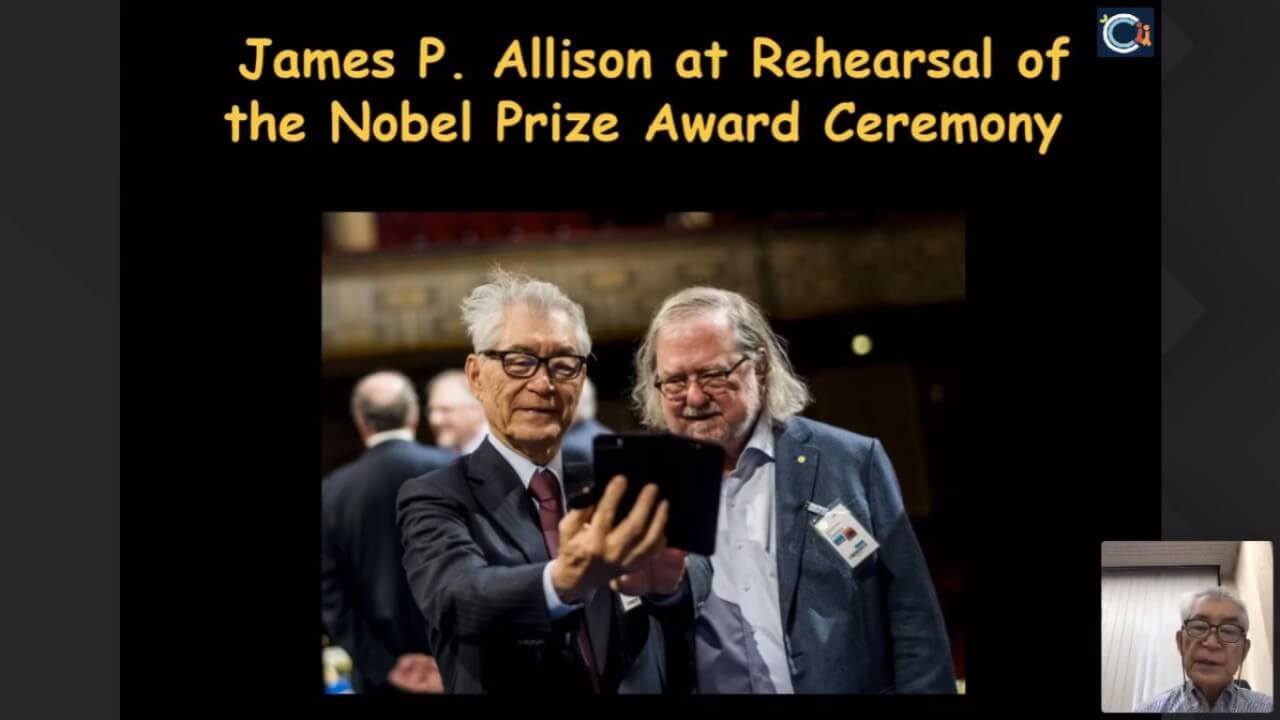BIO Asia-Taiwan 2020: Nobel Laureate Prof. Tasuku Honjo Reflects on the Future of Cancer Immunotherapy
TAIPEI, TAIWAN – The 2020 edition of BIO Asia-Taiwan kicked off amidst much excitement at the Taipei Nangang Exhibition Center on July 22nd, 2020, with thousands of attendees joining the event virtually or in person. Prof. Tasuku Honjo graced the opening plenary with his illuminating talk on the remarkable advances of cancer immunotherapy and the promise it holds for the future.
Following the tremendous success of the inaugural edition last year, the Biotechnology Innovation Organization (BIO) and the Taiwan Bio Industry Organization (Taiwan BIO) decided to jointly organize the BIO Asia-Taiwan 2020 conference from July 22-26, 2020. Due to the ongoing COVID-19 crisis, the event was transformed into a hybrid (Online + Live) format, essentially making it the first major biomedical conference to be held in Asia since the onset of the pandemic.
The inaugural plenary session commenced with the presentation of Dr. Tasuku Honjo, Distinguished Professor of Kyoto University. Prof. Honjo shared the 2018 Nobel Prize in Medicine or Physiology with Dr. James Allison for contributions to the immune checkpoint blockade approach in cancer immunotherapy.
Transformation of the Cancer Immunotherapy Field
Over several decades, many researchers have conceptualized employing host immune cells to combat cancer and have attempted them without much success. As early as 1970, Nobel laureate Sir Frank Macfarlane proposed the model of “immune surveillance against cancer” for the first time. Yet, scientific research majorly concentrated on boosting the immune system’s accelerators using approaches such as cancer vaccines, T lymphocyte activation, and cytokine treatment.
It was not until the discovery of immune checkpoint proteins the full potential of cancer immunotherapy was realized. Since the 1990s, researchers shifted their focus on the immune system’s brakes and quickly discovered the cytotoxic T-lymphocyte antigen 4 (CTLA-4) and Programmed Death 1 (PD-1) proteins. Dr. Allison’s research demonstrated that the CTLA-4 receptor expressed on T cells acts as a brake to prevent immune responses. By removing these brakes, one could activate immune cells that target and kill tumors. The successful tumor regression observed in mice and later in cancer patients culminated in the development of Ipilimumab (Yervoy), the first FDA approved monoclonal antibody against CTLA-4 for the treatment of advanced-stage melanoma in 2011.
 Dr. Tasuku Honjo and Dr. James P. Allison
Dr. Tasuku Honjo and Dr. James P. Allison
On the other hand, the discovery of PD-1 by Dr. Honjo and coworkers led to the development and approval of anti-PD-1 drugs like Pembrolizumab (Keytruda) and Nivolumab (Opdivo) in 2014. PD-1 acts as a brake in immune activation by binding to PD-L1 on other cells. Through evolution, several cancers have attained the ability to fool the immune system by expressing PD-L1 on their surfaces. Therefore, blocking PD-1 with antibodies effectively reduced the size of tumors.
Since the approval of the PD-1 blockade therapy for melanoma, numerous clinical trials have evaluated potent antibodies against various types of cancers. The beneficial aspects of anti-PD-1 therapies, such as minimal adverse effects, strong efficacy over a wide range of tumors, and post-treatment durability, have caused a paradigm shift in cancer treatments in recent years. However, Prof. Honjo also drew our attention to some of the current issues ailing the field, namely patients who are unresponsive to treatments.
At present, high mutagenesis is the standard biomarker for tumors. However, predicting an individual’s immune power remains a challenge. Another aspect that needs improvement is the efficacy of immunotherapy, which can be achieved by enhancing the accessibility of killer T cells. Researchers are now focusing on the latter by resorting to combinatorial therapies that couple PD-1 blockade with chemotherapies or anti-CLA4 agents,
Recent Progress and Future Prospects
Prof. Honjo then proceeded to discuss how the combinatorial therapy they have been developing is different from the rest. He reasoned that since killer T cells divide almost every 8 hours, they require enormous amounts of ATPs and building blocks to proliferate. Therefore, they expect mitochondrial activation to be a critical rate-limiting step. When probed for such molecules, they identified the PPAR -PGC-1 complex, which is critical to stimulate mitochondrial biogenesis and activation. Hence, combining bezafibrate, a known drug that improves mitochondrial biogenesis with anti-PD-L1 antibody, significantly reduced tumor volume.
His team also worked on identifying biomarkers that distinguished responders (respond to immunotherapy) from nonresponders. In a study involving 54 lung cancer patients, blood was drawn before receiving each of the three administrations of anti-PD-1 antibody Nivolumab. From a total of 237 plasma metabolites and 57 intracellular markers analyzed, very interesting metabolite markers were identified. Those include microbiota-related compounds that were upregulated and TCA cycle- and redox-related compounds that were downregulated.
Further, a combination of four T cell markers, those related to mitochondrial activation (PPARγ coactivator 1 expression and ROS), and the frequencies of CD8+PD-1hi and CD4+ T cells demonstrated a high accuracy rate for clinical responses in patients. Using these biomarkers would enable informed treatment recommendations from physicians.
In conclusion, Prof. Honjo quoted a sentence from a 2016 publication in “New Scientist” to describe the current status of cancer immunotherapy – “We are at a point where we’ve discovered the cancer equivalent of penicillin.” He believes that the field would extend its reach to treat more cancers, and perhaps, in the next 15 years, “cancer may become one of the chronic diseases.” The 21st century might well witness cancer getting controlled by immunotherapy with advancements such as microbiome manipulation.
©www.geneonline.com All rights reserved. Collaborate with us: service@geneonlineasia.com






